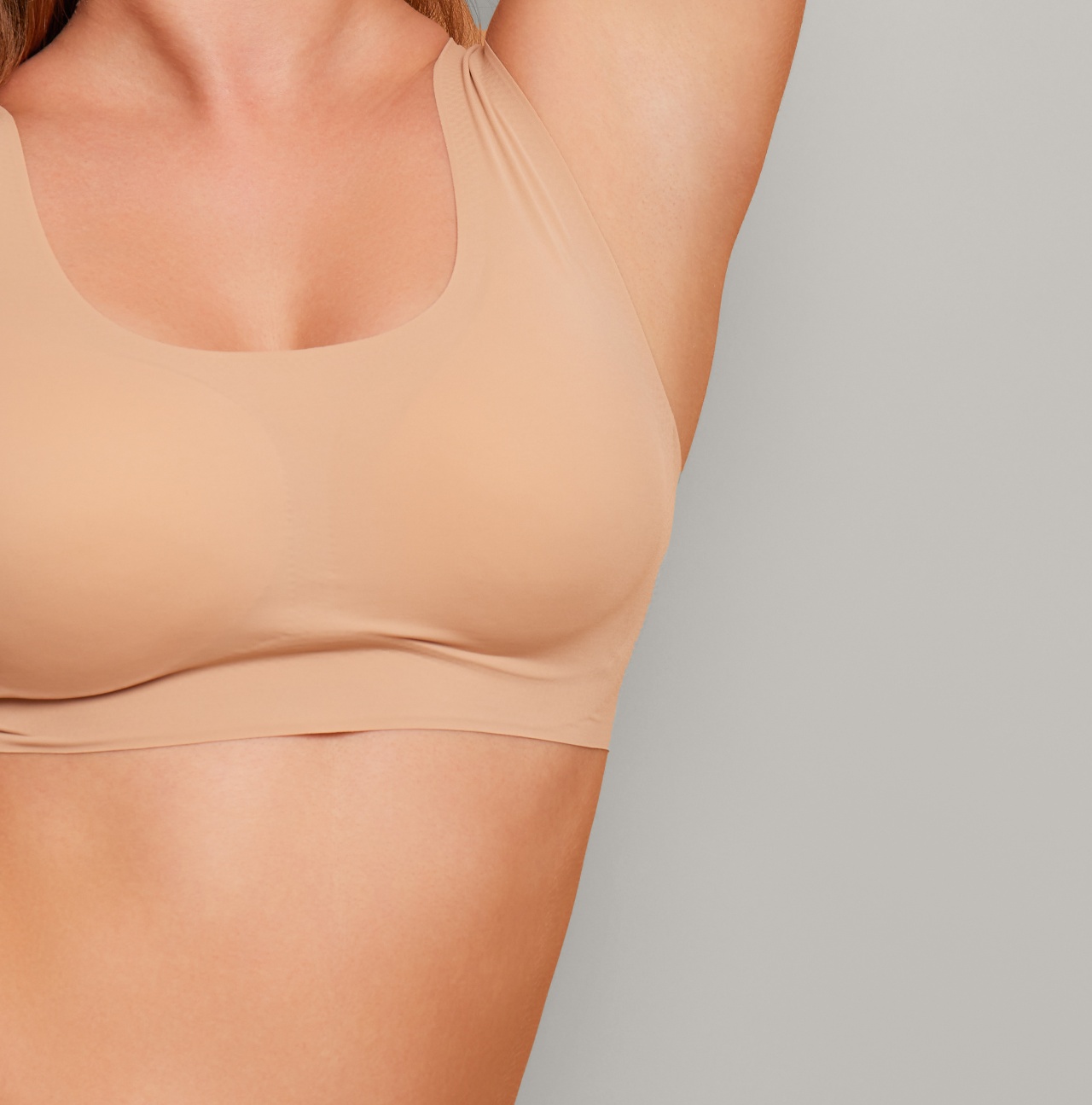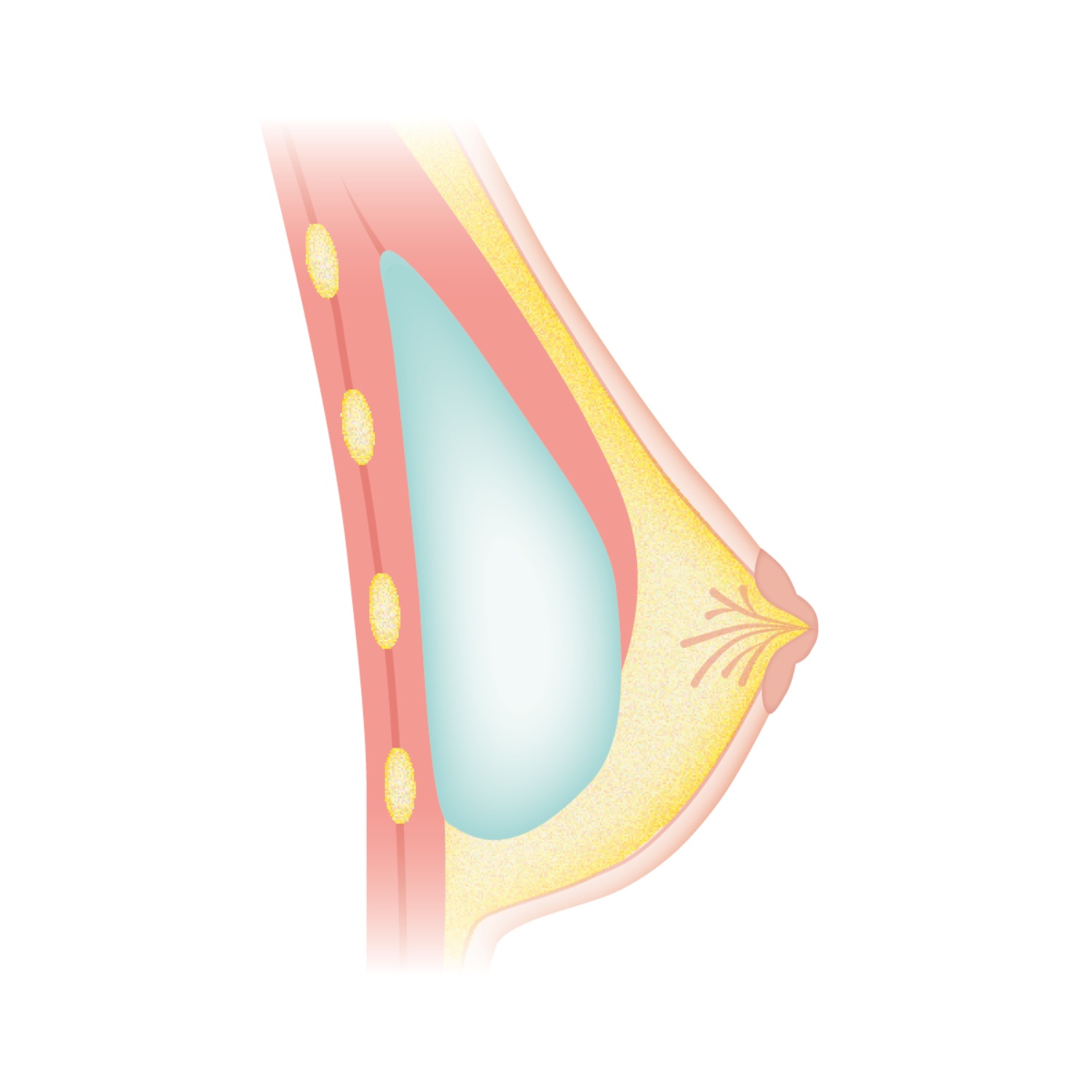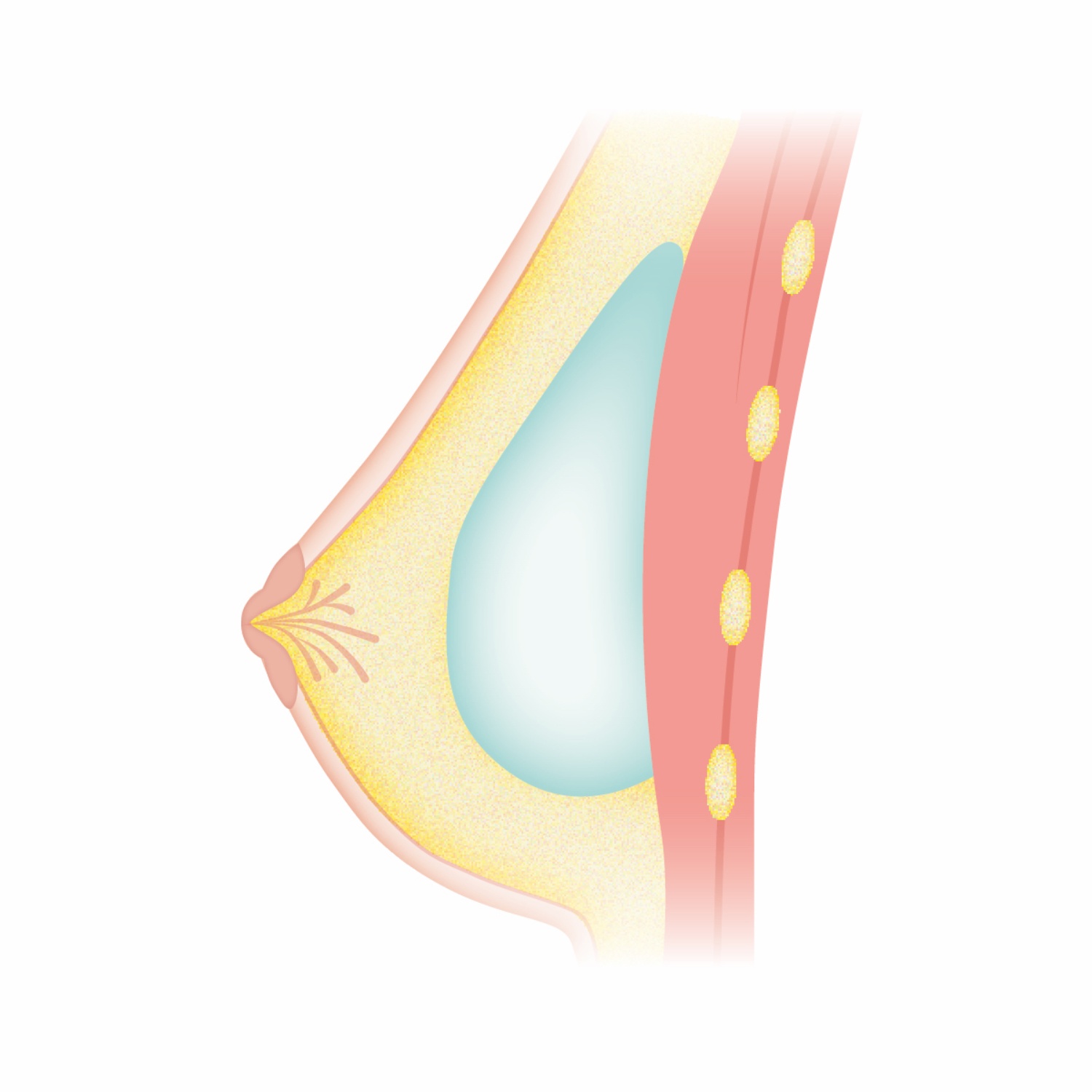

Breast augmentation
Too small, unequally sized or misshapen – there are many good reasons why someone may consider undergoing a breast augmentation. At Aesthea, we take your needs very seriously and support you along your individual journey to a positive body image and healthy sense of self-esteem. Implants of the highest quality and safety as well as gentle, low-scar surgical techniques result in the breasts you've always dreamed of. Nowadays, you can also opt for a breast augmentation using autologous fat as a viable alternative to implants. In any case, the specialists at Aesthea will always make sure that the breasts are in a harmonic relation to the body – for a feminine and natural looking bosom!
-
DURATION
Approx. 1 hour
-
CLINIC STAY
1 to 2 days
-
COSTS
-
EXERCISE
After approx. 8 weeks
-
ANESTHESIA
General anesthesia
-
FOLLOW-UP TREATMENT
Compression bra for 4 to 6 weeks
-
FIT FOR WORK
After approx. 3 to 4 days; longer sick leave is generally necessary in case of heavy physical work

Breast implants underneath the breast muscle
Ideal for slender persons.
In most cases, and particularly on slender persons, there is a tendency to place the breast implant underneath the pectoral muscle (submuscular placement), in order to ensure the edges of the implants are fully covered and thus remain invisible. Using this technique, the base of the breast will appear larger and the contour transitions will look smoother.

Breast implants in front of the pectoral muscle
A viable option for clients with more endogenous tissue.
Placing the breast implants between the mammal gland and the pectoral muscle (subglandular placement) can be advantageous for clients with abundant endogenous tissue or with sagging breasts. Depending on where the incision is made, recovery time may vary.

Breast augmentation with autologous fat – for particularly natural looking breasts!
The desire to have bigger breasts is wide-spread. However, some are reluctant to insert any foreign material into their body. For those having enough fat deposits, getting a breast augmentation with autologous fat represents a viable alternative to a traditional augmentation with breast implants.
A breast augmentation with autologous fat has many advantages: For one, you can augment and shape your breasts entirely without any foreign material. The breasts remain soft and look particularly natural – which is why even clients with breast implants have begun to give their breasts a more natural look by getting supplementary injections of autologous fat.
A breast augmentation with autologous fat is particularly suited for a combination with a breast lift operation. Last but not least: Suctioning bothersome pockets of fat tissue is a great secondary effect of this method.
Breast augmentation with autologous fat – for particularly natural looking, beautiful breasts!
Good to know
Hot tip: Stay away from breast augmentations with hyaluronic acid!
For a brief period of time there was a lot of buzz around breast augmentations with hyaluronic acid. However, due to the many disadvantages, the hype quickly faded away. The costs of this method were extremely high – without any lasting results.
In addition to that, there was no agreement on how to perform radiological examinations on breasts that contained injectable materials. Due to this general uncertainty that method eventually became obsolete.
Nowadays, there are two tried and tested methods to perform breast augmentations: with breast implants or with autologous fat. The specialized plastic surgeons at Aesthea can perform both methods expertly and safely – giving you the bosom of your dreams!
FAQ
Frequently asked questions
Here you will find the answers to frequently asked questions.
If you do not find the answer to your question, please do not hesitate to contact us.
Is there a minimum age for breast augmentation?
You should be at least 18 years old before getting a breast augmentation. This is the guideline of the Swiss Plastic Surgery Association and is observed in many countries. Although an exception can be made in special cases, such as an inherent deformity, each individual case must be examined carefully and critically.
What are the risks involved in breast augmentation?
Although every surgical operation involves certain risks, those associated with breast augmentation are relatively low. Important prerequisites for successful breast augmentation surgery are that you are healthy and that it is performed by qualified personnel as well as in a state-of-the-art operating room, such as the ones at Aesthea. The operating room should also have the highest sterility category, as is the case for heart, eye and neurosurgery and orthopedic surgery.
The risk of post-operative bleeding or infection is less than one percent. Capsule formation occurs in around five to ten percent of cases. Issues with scarring are very rare.
Sensitivity in the nipple may be temporarily impaired, especially with large implants. This is due to skin and nerves being stretched and because fine nerves are severed during the operation. Numbness or temporary oversensitivity tend to subside quickly; only in rare cases do they persist.
The specialists at Aesthea will inform you about possible risks during a personal consultation.
Is it still possible to breastfeed following breast augmentation?
The ability to breastfeed generally remains intact after undergoing a breast augmentation. Since the implant is placed behind the milk-producing gland, the integrity of the mammary gland remains intact and the ability to breastfeed is usually retained.
What is meant by capsule formation/capsular contracture?
Capsule formation/capsular contracture is caused by a natural fibrotic foreign body reaction in which the body’s own connective tissue envelops the implant. This layer sometimes thickens over the years, making the breast feel firmer. Corrective surgery is only appropriate in pronounced cases. Corrective surgery removes the capsular contracture and usually also replaces the implant.
How long will I be unable to work?
You can expect to be unable to work for one to two weeks. This also depends on your job: most office workers, for example, can resume work after about ten days. Women with a physically demanding profession (hairdresser, cook, physiotherapist, nurse, etc.), on the other hand, should expect a somewhat longer period of incapacity to work.
Can the breast be enlarged without surgery?
Although hormone treatment can be used to enlarge the breast without surgery, this also increases the risk of cancer. As an alternative to breast augmentation using implants, the breast can also be enlarged by means of lipofilling (injections with autologous fat). The extent to which autologous fat injections contribute to the development of tumors has not been conclusively researched. We advise against bio-resorbable hyaluronic acid injections.
What sort of implants are used?
The implants used at Aesthea are made of silicone. The implant may be filled with a saline solution or a cross-linked (cohesive) silicone gel. The advantage of cross-linked (cohesive) silicone gel is that it is nice and soft and retains its shape. Thanks to the cross-linking of the silicone gel, implants can no longer leak today.
Do implants interfere with medical diagnostic procedures (e.g. mammogram in case of suspected breast cancer)?
The mammary gland always remains accessible for a preventive examination – even with an implant. An experienced examiner will not overlook indications of possible breast cancer. We recommend that patients over 30 years of age have a mammogram/ultrasound examination before implantation; in case of familial breast cancer sometimes even before the age of 30.
Will the breast implants increase my risk of breast cancer?
No, the risk of breast cancer is not increased by having breast implants. Statistical studies have shown that patients with breast implants receive better radiological and gynecological follow-up care. Any cancerous changes in the breast are often detected earlier as a result, which can have a positive effect on the overall prognosis.
Are the implants used today safer?
The first implants made of silicone gel date back to 1962 and the gel used today is much less liquid than back then. Should the shell tear, the risk of the silicone penetrating the mammary gland is thus very low. The anti-diffusion shells used in the latest generation of implants further limit the spread of silicone molecules.
How do I select the “right” implants for me?
The specialists at Aesthea will advise you on the selection of implants to suit your individual circumstances and wishes. The so-called MP implant (moderate profile) is used very often. If a woman with a narrow chest wants substantial breast volume, so-called HP implants (high profile) with a narrower base can be used to prevent the breasts from protruding on the sides. As most women are looking for nice curvature in the upper breast area, teardrop implants are rarely used anymore. There is also a risk of such implants rotating a little during the healing process, which would result in the teardrop shape slanting off to one side.
How is the ideal implant size determined?
The size of the implants depends on various factors, such as the woman’s height, the weight of her breasts, her chest shape and size as well as the desired volume and shape. Canfield’s VECTRA® h2 3D imaging system enables Aesthea to also create realistic before/after simulations and high-definition images of the breast.
How can the insertion of an overly large implant be prevented?
The Aesthea specialists will provide you individual and competent advice, including with regard to implant size. In principle, the choice of implant size depends on your personal wishes. If the size you desire risks harming your long-term health, we strongly advise against it. Perform the following test at home: find a thin bra with the cup size you want. Fill two thin plastic bags with 250 ml uncooked rice each. Close the bags, place them in the bra cups and shape the “breast”. For an ideal visual effect please put on a closely fitting garment and then look at yourself in the mirror. You can then add or remove rice as you like to achieve the desired effect. Once you have determined the right size for you, please put the amount of rice in a measuring cup and note the quantity. If you are still undecided, we will be happy to provide additional advice before the operation. It is very important for us to assist you with your choice of implants so that you feel comfortable with them in the long run.
Is it true that the implant can be inserted through the navel?
In about 70 percent of all breast augmentation surgeries, the incision is made under the breast, in 20 percent in the armpit and in 10 percent in the subareolar region. We don’t cut in the armpit. Whether the incision is made at the edge of the areolar region or the breast fold depends on your wishes on the one hand, and on the medical indications on the other. You can discuss the most suitable incision for you in your personal consultation with one of the expert surgeons at Aesthea.
What are the advantages of placing the implants behind the large breast muscle?
Placing implants behind the large pectoral muscle has the following two advantages: it can reduce the risk of breast hardening and the muscle functions like the body’s own bra, thus providing the breast better support in the long run.
What do I have to consider in the weeks after surgery?
We advise you not to engage in any sports activities in the first six to eight weeks after the operation. You should also avoid raising your arms higher than 90 degrees during the first 14 days.
Can I have a child with breast implants?
Yes, you can have a child with breast implants. Your breast will change just like those of a woman without breast implants during and after pregnancy.
Does the body sometimes reject a breast implant?
Capsule formation or hardening of the breast may occur in certain cases. Small hematomas (bruises) may form in the implant pocket under certain circumstances. Despite all the precautions taken, a capsule may sometimes form and require a follow-up operation. You will receive a disinfectant washing lotion before surgery. This reduces the bacterial load in advance, allowing you to significantly reduce the risk of infection.
How long does breast augmentation surgery take?
Although it usually takes about 60 minutes, the duration ultimately depends on the surgical procedure chosen for you specifically.
How should I prepare for the surgical procedure?
You should not take any painkillers such as aspirin for the last 14 days before surgery, as this slows blood clotting. Please also avoid alcohol and sleeping pills as far as possible. Some food supplements can also increase the tendency to bleed. It is particularly important not to smoke if you want to promote wound healing and reduce the risk of infection. Please do not to apply any cream or body lotion on the day of the operation.
Is anesthesia consultation provided before the operation?
An anesthesiologist will inform you in detail before the procedure.
Do scars remain visible after breast augmentation?
Scars are no longer reddened and are thus almost invisible around six to 12 months after surgery – except in the case of abnormal wound healing. We will discuss the location of the scars and the associated advantages and disadvantages in detail with you before the operation. We recommend follow-up treatment with silicone gel patches once the stitches have been removed.
How are the stitches removed?
Only the end of the suture is removed. The rest of the stitches dissolve by themselves after about three months. There may be some minor swelling in the scar during the first three months.
Are the implants noticeable after surgery?
Implants are usually not noticeable from the outside, except in very slim patients with little subcutaneous fatty tissue. Such patients show significant differences, depending on the choice of implants.
When is implant replacement necessary?
Although a general replacement of implants was recommended every ten years in the past, this is no longer necessary. The latest silicone implants are expected to last a very long time (about 15 to 20 years) today.
There is no reason to replace the implants unless the implants tear or there is increased capsule formation. If a saline solution implant ruptures, the breast usually flattens out within a few days. This is because the water leaks out through the tear and is absorbed by the body. If a silicone gel implant ruptures, in contrast, the breast volume remains the same. The tear is usually detected by a mammogram or echography.
Will I be given all the necessary medication for the follow-up treatment?
We will provide you with all the necessary medication to take home, if this has not been done beforehand already.
When can I engage in any sports activities again after surgery?
You can live normally again without any restrictions and also do sports after about six to eight weeks.
Does breast sensitivity change after breast augmentation?
Although minor sensitivity disorders (e.g. tingling or insensitivity to touch) may occur in the first few months after breast surgery, they tend to subside after around six months.
How long do I have to stay at the clinic after breast augmentation?
The clinic stay at Aesthea is usually 24 hours for breast augmentation.
Is a drainage necessary after the operation?
As minor hematomas statistically increase the risk of breast hardening, we feel that it is important to remedy any minor bleeding that may occur during the night after the procedure.
What are the requirements for autologous fat removal? Do I have to be overweight?
No, you don’t need to be overweight. Everyone tends to have at least minor fat deposits on different parts of their body that can be suctioned and used for breast augmentation.
Does an autologous fat breast augmentation last a lifetime?
Yes, in principle, the transplanted autologous fat tissue is retained for life. Nevertheless, just as with any normal, non-operated breasts, breast shape and (depending on fluctuations in body weight) breast volume changes over the years, which is why further surgery may be desired at a later date. Some of the transplanted fat is lost over the years, which can lead to asymmetry and may make it necessary to repeat the procedure.
Where does scarring tend to occur during autologous fat breast augmentation?
Both liposuction and fat grafting into the breast require minimal incisions (2 to 5 mm) in the skin. These stab incisions are made in the most inconspicuous places possible. The so-called donor areas, i.e. the parts of the body where the patient’s own fat is suctioned off, are generally located on the abdomen, buttocks and thighs. A thin needle is used to gently inject extracted autologous fat into the breast at the desired points after a special preparation.
Can the method be performed several times in a row?
The procedure can, in principle, be repeated several times, thus gradually enlarging the breast, even though this is usually unnecessary.
Does an autologous fat breast augmentation cause microcalcifications?
Very minor calcification occurs around the internal scars during every operation on the breast (both during implant augmentation and autologous fat augmentation, and especially during breast reduction). Only very minor calcifications occur with our method of autologous fat breast augmentation. Today’s ultrasound and mammography techniques make it possible to easily distinguish them from other microcalcifications. We recommend our patients have a mammogram and ultrasound examination before the operation in order to eliminate any uncertainties and make before-and-after comparisons at a later date. The fat should not be injected into the mammary gland during autologous fat breast augmentation as this can result in an unclear diagnosis.
What complications are associated with autologous fat breast augmentation?
Breast augmentation with autologous fat (instead of silicone implants) has hardly any risks, since the body’s own fat cells are used to enlarge the breast. However, not all cells fuse with the existing fat cells. This can lead to the formation of oily cysts if the surgeon lacks expertise or if the surgical procedure is unsuitable. Oily cysts can occur if the fat used consists of larger lumps and its core is not connected to the local blood supply and consequently dies.
A competent and experienced surgeon, as the ones at Aesthea, can largely avoid the formation of oily cysts because if the fat is injected with care, the survival rate of the transplanted tissue is significantly higher. It is nevertheless impossible to entirely avoid the occurrence of very small oil cysts and microcalcifications.
Relevant complications that could lead to unsightly breast shape or even be harmful to health have not been observed in autologous fat breast augmentation to date.
